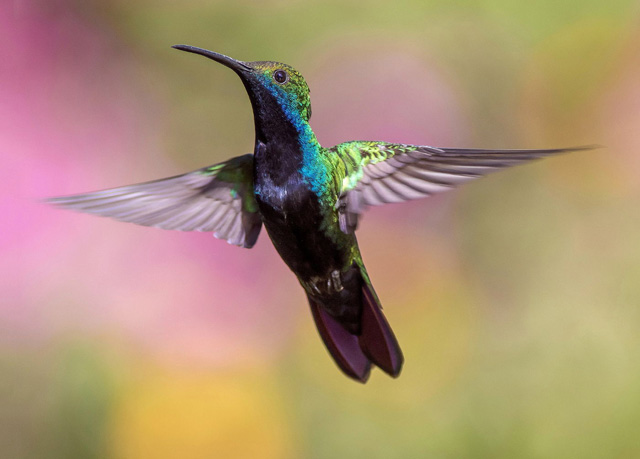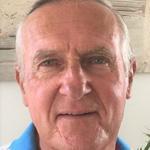
Natural aviators
There are nearly 10,000 recognised species of birds in the world, ranging in size from the tiny hummingbird weighing about 2 gms with a wing span of 8 cm to the 11 kg Andean condor with a wing span of more than 3 m.
Observing nature
Mankind has often learnt from nature.
It is the glory of God to conceal a matter; to search out a matter is the glory of kings [mankind]. (Proverbs chapter 25 verse 2).
So we should: ask the animals and they will teach you, [ask] the birds of the air and they will tell you…Which of all these [animals, birds, fish, earth] does not know that the hand of the LORD has done this? In His hand is the life of every creature and the breath of all mankind. (Job chapter 12 verses 7-9).
In answer to the evolutionist’s argument that creationism is anti-intellectual (‘if you can’t explain it, say God did it’), the above verses contradict this. God encourages research.
From the bird eventually there came the lumbering full-length double-decker French- built Airbus A380 max. 853 passenger jetliner. With a take-off weight of 575 tonnes, we ask how can it possibly fly?
The secret is in the wing
Not having massive jet engines to propel them forward, the structure of birds’ wings in flapping flight must act as both a lifting surface and a means of propulsion.
Every part of bird anatomy is designed to enhance their flight.
They have very strong lightweight hollow bones resembling a honeycomb which connect to the pulmonary system and allow air circulation (pneumatic wings), which increases skeletal buoyancy.
A frigate bird with a wingspan of over 2 m has a skeleton weighing only 113 gm (3.98 oz).
Lift
The genius of wing design is in the curve (hump) on the top of the outstretched wing viewed from the front.
Air takes longer to pass over the ‘humped’ surface resulting in lower air pressure above the wing than that created by air passing along the underside wing surface.
The difference in pressure results in an upward force called ‘lift’. The wing is sucked upwards. For flight to occur lift must exceed the weight of the bird or plane.
Throughout flight the pull of gravity (body weight) constantly works against lift so that if a wing is sufficiently damaged (or destroyed), then crashing to earth will be the inevitable fatal result.
There is a constant tug-of-war between the opposing forces of lift, gravity, thrust and drag. Flight depends on whether the lift force is greater than the weight force and whether thrust is greater than drag.
Additional lift can be created by angling the leading edge of the wing up into the air current so that air flow is directed downwards off the rear of the wing, but above about 15-18 degrees it becomes so steep that air cannot flow smoothly over the top of the wing and lift decreases until a stall (loss of lift) occurs.
Propulsion
During the downstroke, the wing sweeps strongly forward as well as downward. The twist of each wing ensures that the leading edge is tilted progressively downward along the outer portion of the wing as it sweeps backward.
Thus, close to the body the wing generates lift that supports the bird’s weight and nearer the extremity the twist provides thrust.
So minus the need for jet engines and simultaneously with instinctive and lightning speed of the twist, the same downward beat produces both lift and thrust.
On the up-stroke the wing is pulled closer to the body and the primary feathers are parted allowing air to pass through them.
Also, above the wing, because the air molecules travel faster and over a longer distance (there being less pressure) the upbeat moves into an area of less pressure.
When a bird decides to land…
it must reduce speed, cancel lift, and ultimately come to a halt. The general pattern is that just prior to touchdown it tilts backward, raising the front of its wings thereby increasing the angle.
This slows the speed and if the angle is great enough, disrupts the flow of air over the wings thereby creating turbulent eddies that cancel lift and cause stalling. Landing involves a controlled deliberate stall.
Most birds land at an angle into the wind to slow down, using their spread wings and flared tail, and perhaps a few wing flaps. Some run across the ground, lake or river to dissipate momentum.
So which is correct?
The brilliance of the Designer: Creator (Who became Saviour) or multiple mindless directionless chance happenings over unimaginably long unmeasurable time?
Can light, knowledge (including physics) and inventiveness miraculously spring from the blind numbness of darkness? Which will you choose, the kingdom of light or the dominion of darkness?
What God says
Some people try to put a shroud over truth. But the basic reality of God is plain enough. Open your eyes and there it is! By taking a long and thoughtful look at what God has created, people have always been able to see what their eyes as such can’t see: eternal power, for instance, and the mystery of His divine being. So nobody has an excuse. (Romans chapter 1 verse 20, The Message version of the Bible).
Ghandi said the wisdom of, and secret to, living a good life is to: live simply and think deeply.
Is not wisdom found among the aged? Does not long life bring understanding? (Job chapter 12 verse 12).
Thinking deeply, wouldn’t you agree…
That the silent witness of the wing powerfully points undeniably towards the Designer: Creator? The untrue godless mindset of evolution has nothing to do with it.
Divine brilliance is the sole cause.
 Gavin Lawrie is a retired Barrister and Solicitor from Tweed Heads NSW Australia and author of the book: 'THE EVIDENCE OF EVOLUTION: Uncovering The Faulty Science Of Dawkins' Attack On Creationism'. He is married to Jan with two adult children and they are grandparents.
Gavin Lawrie is a retired Barrister and Solicitor from Tweed Heads NSW Australia and author of the book: 'THE EVIDENCE OF EVOLUTION: Uncovering The Faulty Science Of Dawkins' Attack On Creationism'. He is married to Jan with two adult children and they are grandparents.
Gavin Lawrie's previous articles may be viewed at http://www.pressserviceinternational.org/gavin-lawrie.html

Gavin Lawrie is a retired Barrister and Solicitor from Tweed Heads NSW Australia and author of the book: 'THE EVIDENCE OF EVOLUTION: Uncovering The Faulty Science Of Dawkins' Attack On Creationism'. He is married to Jan with two adult children and they are grandparents.
Gavin Lawrie's previous articles may be viewed at http://www.pressserviceinternational.org/gavin-lawrie.html